In these times we have little opportunity for mystical religious experience. By “religious” I mean the feeling that something exciting is about to happen – whether after death or immediately, through the intercession of a divine being, a miracle in life. The neophilic mind has craved magic, craved the new and spectacular, since prehistory. Man deified thunder, worshiped the cave bear. Over time we have refined the impulse; we have learned to associate it with places and things of our own creation, which provoke the mystical feeling in themselves and in what they represent. Cathedrals were at once a site for worship and a site for awe, and our better natures were expressed in them for centuries.
These days a small minority of us, mostly situated in the developed world, have replaced the awe of religious experience with the awe of technological advancement. To further that line of thinking, the fanboy is, it can be argued, a new form of religious supplicant and the fanboy’s most prominent church is the Church of Apple.
The Apple iPad is like a great comet heralded in a cloud of rumor and tailed by equal parts excoriation and praise. I bring up the concept of religious experience because, for many of us, something like the iPad is the closest we get to the presence of a divine being. If you consider the situation, it is very mythic: we hear rumors of something; a prophet (Walt Mossberg) appears to tell us rumors of its coming; lesser prophets (bloggers, Gene Munster) talk up the coming; finally, it arrives with a tumult of excitement, lofted skyward by the high priest (Jobs). Unlike religious experience, however, a device cannot sustain us emotionally and so we are reduced to waiting for the next one… and the next. I know I’m getting metaphysical here and I apologize for this little exercise in throat clearing before I begin a review of one of the most anticipated products in several years. I’ve been thinking a lot about the juncture of belief aka “fanboyism” and technology and I think the iPad is a perfect example of the melding of these profane yet natural impulses.
Short Version
So with this we begin my iPad review. I’ll tip my hand right now: My official opinion is to wait. The device, as it stands, is so close to the original iPhone that you get a sense of Deja Vu when you open the box and are exposed to the empty canvas bare of apps. Out of the box it is, at best, a large iPod Touch. As Adam Engst wrote on Tidbits: “Here’s the thing that I’ve realized after using the iPad – it’s a blank slate, a tabula rasa.” This is both good and bad. Because even the iBook store is not pre-installed, Kindle konverts may be disappointed and because most of the best functionality comes in the form of iWork for iPad and any number of apps and games, as a pure, unadulterated Apple artifact it is a bit underwhelming.
But what should you wait for?
I certainly enjoy using the device, and I will be purchasing a 3G model when it comes out because I don’t want to be tethered to Wi-Fi. You could also wait for the second generation and I think many of the unconverted iPhone users will take that route once they see enough iPads to get jealous. But that’s getting ahead of ourselves. Let’s talk about…
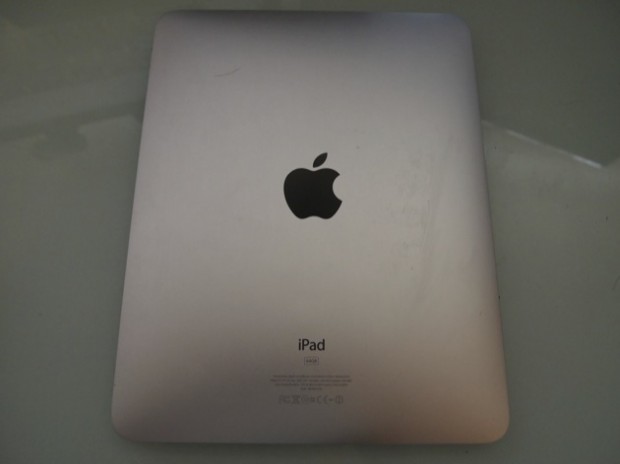
The Device
As a piece of industrial design the iPad is gorgeous. It is surprisingly heavy – I suspect the glass gives it the heft – and curiously devoid of ports and buttons. Those unfamiliar with Apple’s mobile styling will wonder where the USB port and other slots are hidden and, obviously, there is no trick. The device has a single iPod-style jack at the bottom (but charges only on 10-watt USB ports so won’t charge from older pre-USB 2.0 computers), volume buttons under a screen position lock on the right side, and a headphone jack/mic on top along with a small outlet for a speaker on the bottom. Click here to hear a demo of recording quality.
The iPad is clearly something you have to take care of. The huge screen is just askin’ for a crackin’ and the rear side doesn’t fare well against whatever nitty-gritty crumbs, dust, and what-nots you might have on your table, making Apple’s $39 case (or another case of similar quality) a must. The case, incidentally, also doubles as a stand so you can use the iPad like a little TV on your airplane tray. With a tap of a button the iPad also doubles as a digital picture frame.
Communications
Wi-Fi on the iPad is a bit of a mixed bag. When you’re too far from the base station you’ll either work fine or, in some cases, won’t have a connection at all. In situations where most of my devices have worked just fine using my home Wi-Fi the iPad suffered from outages. Apple has semi-acknowledged this problem, and it’s likely that future models will correct this if it isn’t addressed in a firmware update.
The Wi-Fi iPad has no real GPS chip. Instead it uses an assisted method that triangulates based on Wi-Fi signals. In my limited tests it did find me with some degree of accuracy. The 3G model will have assisted GPS as well as cellular triangulation. As it stands, the Wi-Fi model is not a sufficient dedicated GPS device replacement – not that you’d want this thing on your dashboard or, worse yet, out on the trail.
Because it transmits over the a/b/g/n Wi-Fi standards, you’re fairly future-proof. Page downloading and rendering is quite speedy and app and document downloads are also speedy over Wi-Fi.
Media Playback and Gaming
The iPad is an excellent media player out of the box. It plays AAC and MP3 files and syncs with iTunes without issue. The three step process for choosing videos, however, is a bit convoluted. First, you see your video list in thumbnail mode. Then you see the video information and a button to play. Finally, you see the (usually letterboxed) video. Audio quality is fine (your headphones have a lot to do with audio quality anyway) and video quality is excellent. Fans of HD video should be aware that the iPad supports up to 720p and not real 1080p HD. HD content will, of course, be resized for display on the 1024×768 display. The iPad supports, officially, H.264 video up to 720p, 30 frames per second.

The iPod feature works like a standard iPod but, because of the larger screen, has more data on one page.
Photo viewing is not particularly noteworthy although you can now copy and paste images from multiple sources into other applications. For example, you can take an image from an iBook and paste it into a Pages document, a welcome productivity enhancement.
The iPad is actually a great tool for the photographer on the go. With the optional SD card or camera connector, viewing photos on this is made a matter of plug and play. I look forward to the inevitable camera tethering app.
Typing and input
The question is whether you can get work done on this device. My initial assessment is “yes” but with caveats. The keyboard in both modes is made for the thumbs. You can turn this thing into more formal typing machine if you put it down, and I’m pleased to note it works very well. Typing is an acquired taste and you will miss spaces and other punctuation if you go fast enough. Spell correction assists with most errors and the rest must be caught on the fly lest they pile up. All of that said, I just typed this entire paragraph on a subway train using my thumbs and all ten fingers, alternating typing styles as I went. I do not enjoy the feeling of hard glass on the delicate tips of my girlish fingers – I’m used to real keyboards – but the fact that I’m able to type comfortably is a revelation. One pet peeve: if you tap elsewhere on the screen with an errant finger your cursor moves quickly and imperceptibly. It’s a bit frustrating.
The standard iPhone OS design elements apply in his new device including the pop up magnifier for viewing text and all of the rotating item selection elements familiar to long time users. No surprises here.
Productivity
As I mentioned before, work can be done on this device. It is more laptop than it lets on. The iWork suite is the jewel in its productivity crown but almost everything else – email, notes, calendar – have been revamped and improved for the larger screen. Mail is a bit wonky in portrait view – a small window pops out of the account identifier and over your current message – but this is fixed when in landscape mode and you have a large, 3/4 screen dedicated to the message and a 1/4 section dedicated to a list of emails. Sadly, Mail still uses the iPhone’s “single inbox per account” method. I think a universal inbox a la some Android and Blackberry phones would really make this shine, and some enterprising developer is certainly already working on this.
The defining metaphor for the address book and calendar is the common, paper datebook. The apps are photorealistic to a fault – Apple’s design aesthetic has been heading in this direction more lately and I’m not sure I quite like it – but as it stands it’s an nice way to see data that is often jumbled on other screens.
Because my mission here is to review the device “out of the box,” I’m loath to mention Pages, Numbers, and Keynote. However, if you’ve used these apps on the desktop then you’ll be pleased to note they’re great on the iPad. The problem, however, is that the iPad versions of these apps support styles and do not allow you to change fonts on the fly. Obviously this is a limitation due to the storage size and processing power and I suspect it will soon be remedied.
The battery is amazing. It fell down to 60% after a full day of use including lots of gaming and movie watching. I was quite impressed and you will be as well.
iBook Reading
This is where I need to take the iPad again out of its virgin state and talk about an add-on app. Much lip service has been paid to the Kindle v. iPad debate and I think, right now, that point is moot. First, Amazon isn’t in the hardware business. The Kindle was their best guess at making an ebook reader and, not surprisingly, they succeeded with plenty of first mover advantage. But place the Kindle and the iPad together on the same table and it’s like looking at the man-chimp before and after it touches the monolith – in one scene it’s a bone flying into the air and in the next it’s a space station tumbling across the starscape. The difference is that stark.
But remember: the Kindle is not the machine. It’s the soul in the machine. Amazon could have created a thermal paper fax that allowed you to read books on the fly by spooling out from a 100-foot roll and, if we expected nothing better, thousands of us would buy it just to get the books more cheaply and efficiently than waiting for the mailman to arrive or, worse yet, walking into a Barnes and Noble. I’m being facetious, but the Kindle store changed a lot of things.
But remember: the Kindle store is also on the iPad. It’s an app. It works wonderfully, just like the iBook store. My only problem with the iBook store is a dearth of good content. I couldn’t find many books I wanted to read, but built-in ePub support as well as the very simple drag-and-drop method for adding and syncing books via iTunes makes using the app a real treat. The iBook store will not kill the Kindle store – Kindle is cross-platform and backed by the biggest bookstore in the world. However, the experience in the iBook store – again with its photorealistic reading metaphor – is just as nice as the Kindle’s. It’s really a matter of taste and frustration.
My advice? Don’t by the iPad for its e-reader functionality if you already own a Kindle. The Kindle is a very nice e-reader and, unless you think you need the backlit screen, you’re not getting much more than you’re already getting. The iPad is a good e-reader and it’s one of the best in a crowded market.
The Bad
First, the screen takes fingerprints like a mofo. A few minutes of use and it looks like you covered it in lard. It could just be me, obviously, and it probably is. However, invest in a box of tissues or a microfiber cloth. The screen also washes out in sunlight, making a tough sell if you’re trying to read books on a beach vacation.
I have a few very minor issues with the iPad as it stands. First, it’s hobbled by its lack of an SD card slot. As we’ve seen from a number of teardowns there is obviously enough real estate inside the case to fit an SD card slot but, as we know, Apple 1.0 products are very conservative.
I also haven’t gotten over the iPhone OS “buttons on a screen” UI that works so well on the iPhone. Because of the larger screen these buttons, in 4×5 configuration, have too much leading – or space – between them. While I like that it prevents the fat fingered from tapping the wrong button, I just feel like there is too much dead space on the screen. You can, however, add two extra icons to the bottom home bar, a boon to those who want to, well, add two extra icons to the tool bar. Unfortunately, I don’t see Apple allowing for further user configuration of their previous UI any time soon.
Other than that the iPad has no learning curve. I’m pleased with the keyboard and I like the apps. To be completely blunt, out of the box it’s a big iPod Touch but, because of its size and a few very key apps, it quickly becomes much more.
The Bottom Line
To return to my original point – the idea that the iPad is a “magical” thing in a decidedly unmagical world – I can honestly say that Apple got things right here in a way no one else has. The iPad excited us all so much that it’s kind of a let-down to hold the physical manifestation of that hype in your hands but, in the end, this is where we’re headed in terms of industrial design and use case. To look at the iPad in a vacuum devoid of history is to look at a magical device. To look at it with an understanding of what came before it is to look at it as a culmination in almost a decade of flailing by Microsoft and other device makers in the tablet space. The iPad is what we expect Geordi LaForge to carry on the Enterprise (but we’ll settle for Q and Data).
Again, as I said before, this is 1.0 hardware without cellular network capabilities. While Apple did sell 300 to 600 thousand of these things, I wouldn’t say that this device will be the popular incarnation and I expect the 3G model to be a bit more popular, especially with the a la carte service options.
The screen is beautiful. The productivity apps are usable if not excellent. The games are fun and rich. The form factor is striking. Like all new technologies it will take a while for this device to find its place in the world but when it does, watch out. While I won’t say we’re witnessing a miracle here, for folks who need to do a little browsing and a little text editing – along with a little gaming, a little file sharing, a little photo viewing, and all the rest – the iPad is definitely a device worth the investment.
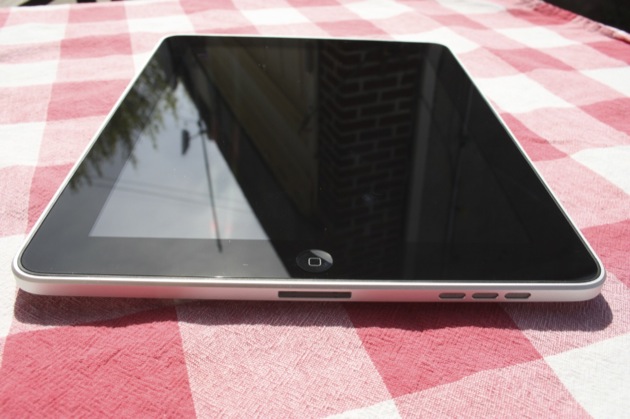
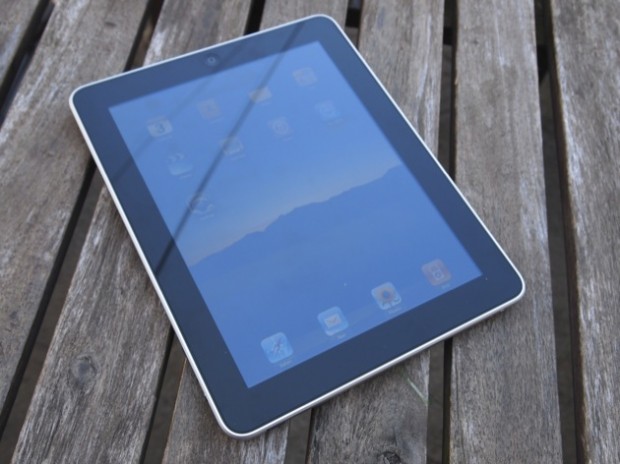
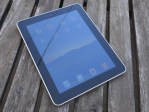

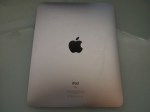
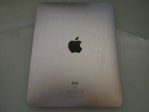





























Comment